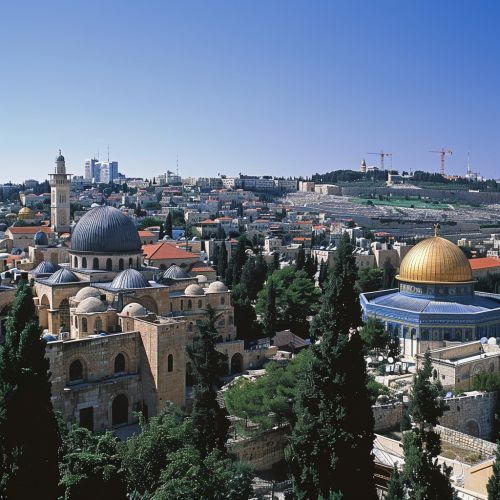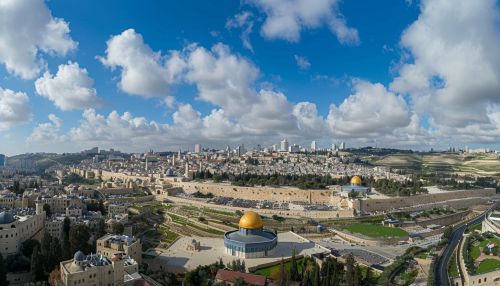Religious Significance of Jerusalem
Introduction
Jerusalem, a city of profound historical and religious significance, has been a focal point of three major world religions: Judaism, Christianity, and Islam. The city's religious importance is deeply intertwined with its history, politics, and cultural identity. This article explores the religious significance of Jerusalem, delving into its role in these three religions and the sacred sites that make it a spiritual magnet for millions of people worldwide.
Religious Significance in Judaism
Jerusalem holds a central place in Jewish religious consciousness. The city is synonymous with the location of the First and Second Temples, the holiest sites in Judaism. The Western Wall, the only remaining part of the Second Temple, is a revered site of prayer and pilgrimage for Jews worldwide.
The First Temple
The First Temple, also known as Solomon's Temple, was built by King Solomon in the 10th century BCE. According to the Hebrew Bible, it housed the Ark of the Covenant, which contained the Ten Commandments. The destruction of the First Temple by the Babylonians in 586 BCE is a significant event in Jewish history, marking the beginning of the Babylonian Exile.
The Second Temple
The Second Temple was built after the return of the Jews from the Babylonian Exile. It stood for nearly six centuries before it was destroyed by the Romans in 70 CE. The Western Wall, also known as the Wailing Wall, is the only remaining part of the Second Temple complex and is considered the holiest site where Jews are permitted to pray.
Religious Significance in Christianity
For Christians, Jerusalem is the city of Jesus Christ's crucifixion, burial, and resurrection. The city is home to many Christian holy sites, including the Church of the Holy Sepulchre, the Via Dolorosa, and the Mount of Olives.
Church of the Holy Sepulchre
The Church of the Holy Sepulchre is one of the most important Christian sites in Jerusalem. It is believed to be the site of Jesus' crucifixion, burial, and resurrection. The church is a major pilgrimage destination for Christians worldwide, particularly during the Easter season.
Via Dolorosa
The Via Dolorosa, or "Way of Sorrow," is a processional route in the Old City of Jerusalem, believed to be the path that Jesus walked on the way to his crucifixion. The route ends at the Church of the Holy Sepulchre.
Mount of Olives
The Mount of Olives is another significant Christian site in Jerusalem. According to the New Testament, Jesus ascended to heaven from this location. The Mount is also home to several important Christian churches, including the Church of All Nations, the Church of the Ascension, and the Church of Mary Magdalene.
Religious Significance in Islam
Jerusalem, or Al-Quds in Arabic, is the third holiest city in Islam after Mecca and Medina. The city's significance stems from the Al-Aqsa Mosque and the Dome of the Rock, both located on the Haram al-Sharif, or the Temple Mount.
Al-Aqsa Mosque
The Al-Aqsa Mosque, meaning "The Farthest Mosque," is considered the third holiest site in Islam. According to Islamic tradition, the Prophet Muhammad was transported from the Sacred Mosque in Mecca to Al-Aqsa during the Night Journey, or Isra and Mi'raj.
Dome of the Rock
The Dome of the Rock is an Islamic shrine located on the Temple Mount. It is one of the oldest works of Islamic architecture. The shrine is built over the Foundation Stone, which is significant in both Judaism and Islam. According to Islamic tradition, the Prophet Muhammad ascended to heaven from this location during the Night Journey.
Conclusion
Jerusalem's religious significance transcends boundaries and faiths. As a city sacred to Jews, Christians, and Muslims, it is a unique confluence of faiths and a testament to the city's rich religious history. Despite the city's contested status and the conflicts that have marked its history, Jerusalem continues to be a beacon of religious devotion and spiritual exploration.


